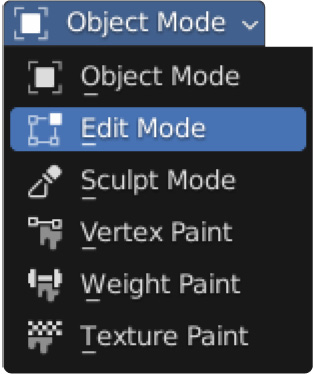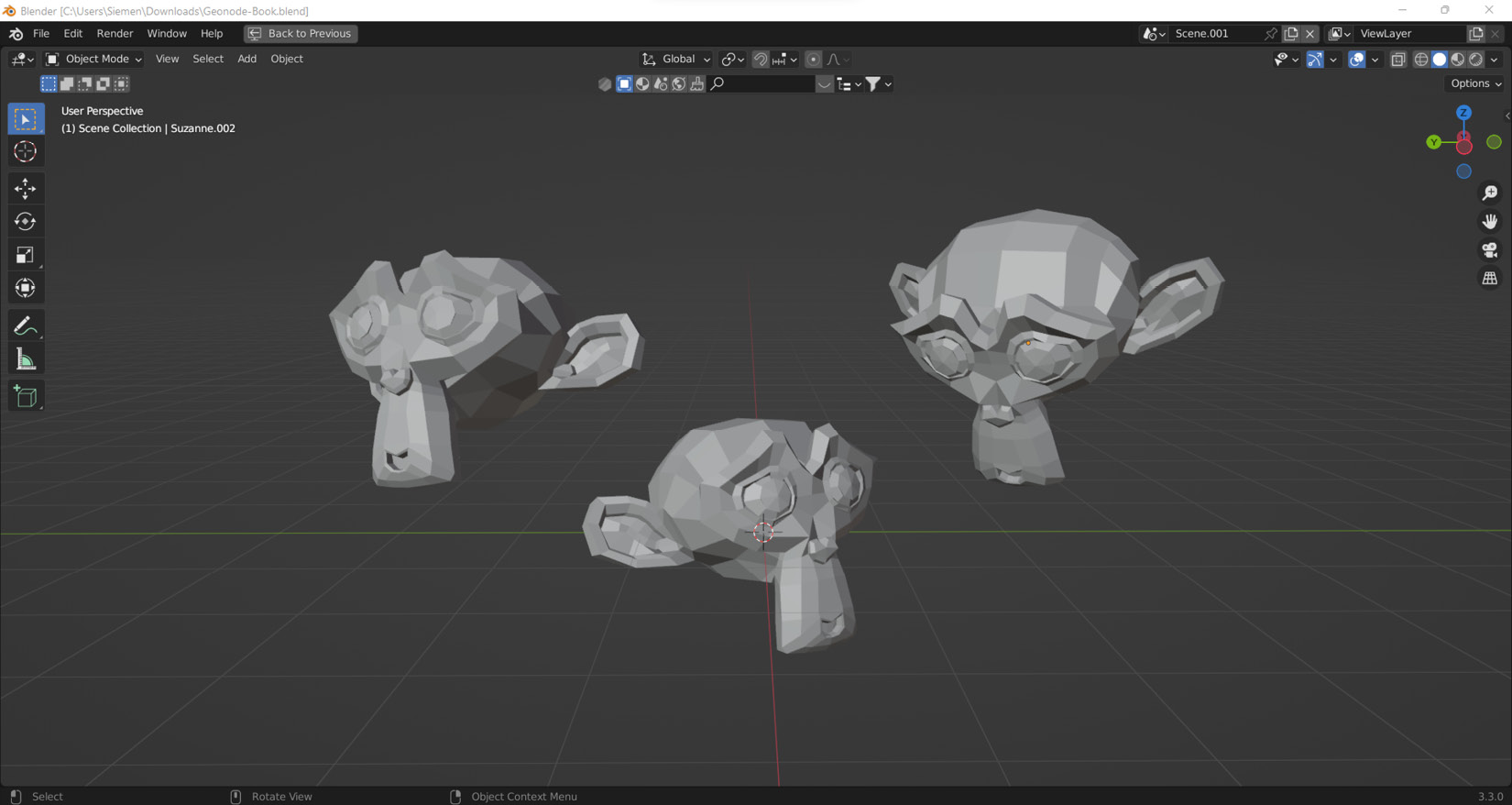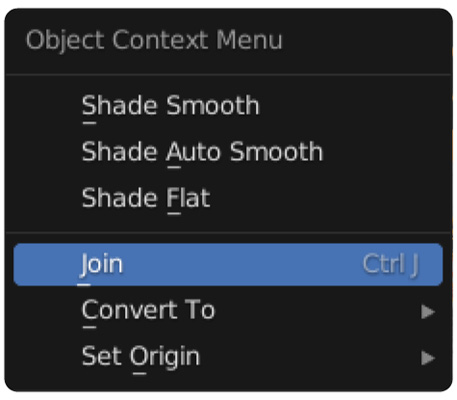Creating a scene in our Viewport
Let’s start this chapter off by making a simple scene in our Viewport. We will do this in Edit Mode in the Viewport:
- To do this, let’s go to the Layout workspace and press Tab to enter Edit Mode. Alternatively, you can also choose to enter Edit Mode via the button shown in Figure 11.1.

Figure 11.1: Mode selection
- For this exercise, we will take three Suzanne primitives and place them around our Blender Viewport. We went with the scene you can see in Figure 11.2.

Figure 11.2: The Viewport
- The next step is to join these models together by selecting all the models and clicking Join from the Object Context menu, as you can see in Figure 11.3.
Alternatively, you can also use the Ctrl + J shortcut.

Figure 11.3: Object Context Menu | Join
- Now that we have completed our scene, we can head to the Geometry Nodes workspace...































































